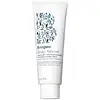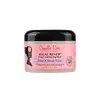What's inside
What's inside
 Key Ingredients
Key Ingredients

 Benefits
Benefits

 Concerns
Concerns

 Ingredients Side-by-side
Ingredients Side-by-side

Water
Skin ConditioningCaprylic/Capric Triglyceride
MaskingHydroxypropyl Starch Phosphate
Cetearyl Alcohol
EmollientGlyceryl Stearate
EmollientBrassica Alcohol
EmollientPropanediol
SolventGlycerin
HumectantCetyl Alcohol
EmollientCocos Nucifera Oil
MaskingCharcoal Powder
AbrasiveAloe Barbadensis Leaf Juice
Skin ConditioningMelaleuca Alternifolia Leaf Oil
AntioxidantBiotin
AntiseborrhoeicMentha Piperita Oil
MaskingMentha Viridis Leaf Oil
AstringentSodium Hyaluronate
HumectantNiacinamide
SmoothingBrassicyl Valinate Esylate
EmollientCarrageenan
Arginine
MaskingPanthenol
Skin ConditioningCetyl Hydroxyethylcellulose
Emulsion StabilisingCitric Acid
BufferingSodium PCA
HumectantGuar Hydroxypropyltrimonium Chloride
Skin ConditioningMenthyl Lactate
MaskingPlantago Lanceolata Leaf Extract
AntimicrobialPotassium Hydroxide
BufferingCalcium Gluconate
HumectantPotassium Sorbate
PreservativeSodium Benzoate
MaskingSodium Metabisulfite
AntioxidantTetrasodium Glutamate Diacetate
Sodium Glycolate
BufferingSodium Formate
BufferingSodium Hydroxide
BufferingChlorphenesin
AntimicrobialDehydroacetic Acid
PreservativeBenzyl Alcohol
PerfumingWater, Caprylic/Capric Triglyceride, Hydroxypropyl Starch Phosphate, Cetearyl Alcohol, Glyceryl Stearate, Brassica Alcohol, Propanediol, Glycerin, Cetyl Alcohol, Cocos Nucifera Oil, Charcoal Powder, Aloe Barbadensis Leaf Juice, Melaleuca Alternifolia Leaf Oil, Biotin, Mentha Piperita Oil, Mentha Viridis Leaf Oil, Sodium Hyaluronate, Niacinamide, Brassicyl Valinate Esylate, Carrageenan, Arginine, Panthenol, Cetyl Hydroxyethylcellulose, Citric Acid, Sodium PCA, Guar Hydroxypropyltrimonium Chloride, Menthyl Lactate, Plantago Lanceolata Leaf Extract, Potassium Hydroxide, Calcium Gluconate, Potassium Sorbate, Sodium Benzoate, Sodium Metabisulfite, Tetrasodium Glutamate Diacetate, Sodium Glycolate, Sodium Formate, Sodium Hydroxide, Chlorphenesin, Dehydroacetic Acid, Benzyl Alcohol
Water
Skin ConditioningAloe Barbadensis Leaf Juice
Skin ConditioningButyrospermum Parkii Butter
Skin ConditioningCocos Nucifera Oil
MaskingBehentrimonium Methosulfate
Cetyl Alcohol
EmollientTheobroma Cacao Seed Butter
EmollientMangifera Indica Seed Butter
Skin ConditioningCannabis Sativa Seed Oil
EmollientPanthenol
Skin ConditioningMel
EmollientGlycerin
HumectantCamellia Sinensis Leaf Extract
AntimicrobialSimmondsia Chinensis Seed Oil
EmollientRosa Canina Fruit Oil
EmollientVitis Vinifera Seed Oil
EmollientOenothera Biennis Oil
EmollientPhenoxyethanol
PreservativeCaprylyl Glycol
EmollientAlgae
Skin ConditioningBiotin
AntiseborrhoeicDimethyl Sulfone
SolventTocopheryl Acetate
AntioxidantMentha Piperita Oil
MaskingWater, Aloe Barbadensis Leaf Juice, Butyrospermum Parkii Butter, Cocos Nucifera Oil, Behentrimonium Methosulfate, Cetyl Alcohol, Theobroma Cacao Seed Butter, Mangifera Indica Seed Butter, Cannabis Sativa Seed Oil, Panthenol, Mel, Glycerin, Camellia Sinensis Leaf Extract, Simmondsia Chinensis Seed Oil, Rosa Canina Fruit Oil, Vitis Vinifera Seed Oil, Oenothera Biennis Oil, Phenoxyethanol, Caprylyl Glycol, Algae, Biotin, Dimethyl Sulfone, Tocopheryl Acetate, Mentha Piperita Oil
 Reviews
Reviews

Ingredients Explained
These ingredients are found in both products.
Ingredients higher up in an ingredient list are typically present in a larger amount.
Aloe Barbadensis Leaf Juice comes from leaves of the aloe plant. Aloe Barbadensis Leaf Juice is best known for helping to soothe sunburns. It is also anti-inflammatory, moisturizing, antiseptic, and can help heal wounds.
Aloe is packed with good stuff including Vitamins A, C, and E. These vitamins are antioxidants, which help fight free-radicals and the damage they may cause. Free-radicals are molecules that may damage your skin cells, such as pollution.
Aloe Barbadensis Leaf Juice also contains sugars. These sugars come in the form of monosaccharides and polysaccharides, folic acid, and choline. These sugars are able to help bind moisture to skin.
It also contains minerals such as calcium, 12 anthraquinones, fatty acids, amino acids, and Vitamin B12.
Learn more about Aloe Barbadensis Leaf JuiceBiotin is a B vitamin that is naturally produced by our bodies. It is also called Vitamin H.
Our bodies use biotin in the metabolism process. It also helps our bodies use enzymes and move nutrients around. A biotin deficiency can lead to brittle hair and nails.
More research is needed on applying biotin topically. However, taking biotin orally has been shown to help nourish the skin, hair, and nails. They play a role in forming skin-hydrating fatty acids.
Biotin is water-soluble. It can be found in foods such as fish, eggs, dairy, nuts, and meat. Vitamin H stands for "haar" and "haut". These are the German words for hair and skin.
Learn more about BiotinCetyl Alcohol is a fatty alcohol. Fatty Alcohols are most often used as an emollient or to thicken a product.
Its main roles are:
Though it has "alcohol" in the name, it is not related to denatured alcohol or ethyl alcohol.
The FDA allows products labeled "alcohol-free" to have fatty alcohols.
Learn more about Cetyl AlcoholCocos Nucifera Oil is obtained from the kernels of the coconut fruit. In other words, this is coconut oil.
Coconut Oil is rich in fatty acids with lauric acid making up the majority of these. It also contains linoleic acid. Due to this high fatty acid content, coconut oil helps trap moisture and soften skin.
Despite being antibacterial, coconut oil may not be great for acne-prone skin. It is comedogenic and may clog pores. This ingredient may not be safe for malassezia or fungal acne.
Note: Coconut Oil should not replace your sunscreen for UV protection. Studies show it only blocks about 20% of UV.
This oil is non-volatile and has a light scent.
The term 'fragrance' is not regulated in many countries. In many cases, it is up to the brand to define this term. For instance, many brands choose to label themselves as "fragrance-free" because they are not using synthetic fragrances. However, their products may still contain ingredients such as essential oils that are considered a fragrance.
Learn more about Cocos Nucifera OilGlycerin is already naturally found in your skin. It helps moisturize and protect your skin.
A study from 2016 found glycerin to be more effective as a humectant than AHAs and hyaluronic acid.
As a humectant, it helps the skin stay hydrated by pulling moisture to your skin. The low molecular weight of glycerin allows it to pull moisture into the deeper layers of your skin.
Hydrated skin improves your skin barrier; Your skin barrier helps protect against irritants and bacteria.
Glycerin has also been found to have antimicrobial and antiviral properties. Due to these properties, glycerin is often used in wound and burn treatments.
In cosmetics, glycerin is usually derived from plants such as soybean or palm. However, it can also be sourced from animals, such as tallow or animal fat.
This ingredient is organic, colorless, odorless, and non-toxic.
Glycerin is the name for this ingredient in American English. British English uses Glycerol/Glycerine.
Learn more about GlycerinMentha Piperita Oil is the volatile oil obtained from the whole plant of the Peppermint plant.
It can be used to add a fresh scent to products.
Peppermint oil may cause skin sensitivity and redness due to its menthol content. Menthol also has a cooling effect (like your toothpaste).
Learn more about Mentha Piperita OilPanthenol is a common ingredient that helps hydrate and soothe the skin. It is found naturally in our skin and hair.
There are two forms of panthenol: D and L.
D-panthenol is also known as dexpanthenol. Most cosmetics use dexpanthenol or a mixture of D and L-panthenol.
Panthenol is famous due to its ability to go deeper into the skin's layers. Using this ingredient has numerous pros (and no cons):
Like hyaluronic acid, panthenol is a humectant. Humectants are able to bind and hold large amounts of water to keep skin hydrated.
This ingredient works well for wound healing. It works by increasing tissue in the wound and helps close open wounds.
Once oxidized, panthenol converts to pantothenic acid. Panthothenic acid is found in all living cells.
This ingredient is also referred to as pro-vitamin B5.
Learn more about PanthenolWater. It's the most common cosmetic ingredient of all. You'll usually see it at the top of ingredient lists, meaning that it makes up the largest part of the product.
So why is it so popular? Water most often acts as a solvent - this means that it helps dissolve other ingredients into the formulation.
You'll also recognize water as that liquid we all need to stay alive. If you see this, drink a glass of water. Stay hydrated!
Learn more about Water